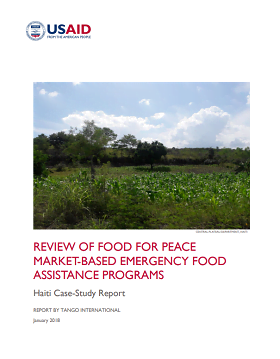Review of Food for Peace Market-Based Emergency Food Assistance Programs: Haiti Case-Study Report
Haiti is a very low-income country with a degraded ecological setting that faces repeated threats from multiple hazards. It is an excellent example of Food for Peace (FFP) linking emergency and development funding through the Kore Lavi Title II program that serves as a model for the national social protection program. FFP effectively provides multiple and blended food assistance modalities as well as modalities that are sequenced and layered where implementing partners provide a combination of different types of assistance through different modalities, depending on the needs of the Haitian population. This approach has shown to be an effective strategy for addressing both short- and long-term needs to improve resilience trajectories. Families were relocated to evacuation centers and received hot meals even before Hurricane Matthew struck in 2016 in part due to the versatility of Title II 202(e)- enhanced funds. As an example of sequencing, this was followed by cash transfers and essential non-food items for immediate shelter and hygiene through close cooperation between FFP and the Office of U.S. Foreign Disaster Assistance. FFP-funded implementing partners also provided unconditional cash transfers, Cash for Work, and agricultural vouchers in the months following the hurricane to ensure layered programming would meet beneficiaries’ needs. Beneficiaries in Kore Lavi areas also received food voucher programming to meet ongoing food security needs.



